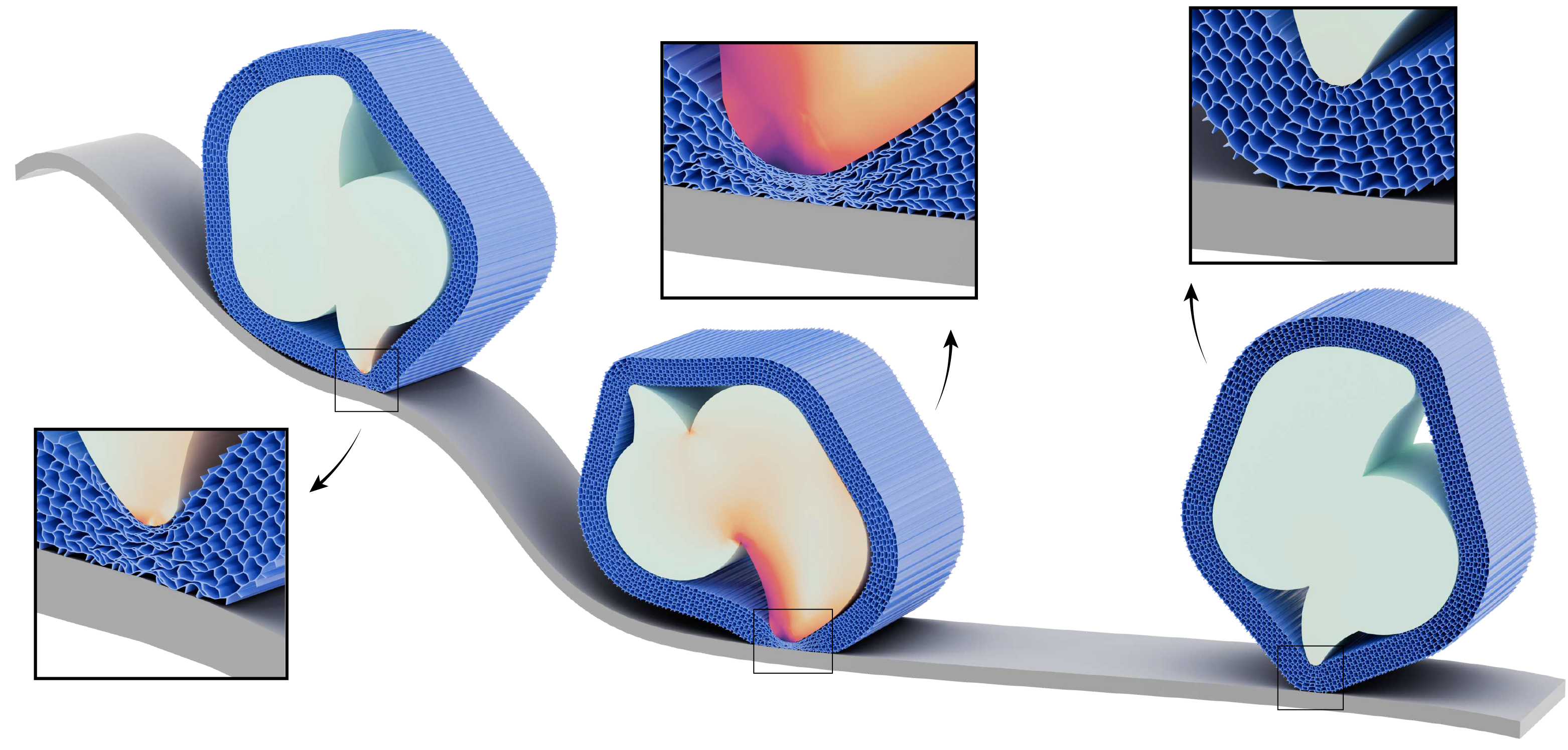A repository of the data and code used in our work, "Optimized shock-protecting microstructures" [Huang et al. 2024].
The code is tested on Linux and Mac (both Intel and Apple Silicon). To run the code:
git clone --recurse-submodules git@github.com:Huangzizhou/ShockProtection.git
# Compile the inflator code
cd ShockProtection/inflator
mkdir build
cd build
cmake ..
make -j16
# Compile the polyfem code
cd ../..
mkdir build
cd build
cmake ..
make -j16
# Unit test
./tests/unit_tests "isosurface-inflator-periodic"
The inflator code is used to map a vector of shape parameters to a periodic mesh of the microstructure cell, and compute the shape velocity of the shape parameters needed in the optimizations. The inflator code is called using terminal commands during the optimizations, since the cmake setup of CGAL (which is used by the inflator) may break the cmake of PolyFEM.
To run a shape optimization and obtain the microstructure cell shape that corresponds to a specific target stress:
cd scripts/
python optimize.py 5000 \
../inflator/data/patterns/2D/topologies/0105.obj \
--no_tile --strain 0.2 --n_samples 3
where 5000 is the desired stress, the optimization will sample 3 strains from 10% to 20% and optimize the stress on those samples to match the desired stress.
All 105 topologies used in the paper are in folder inflator/data/patterns/2D/topologies/0105.obj, one can provide a new .obj edge mesh to run the optimization on a custom cell topology. The edge mesh has to fit into the unit cube and be periodic in both directions.
The above command creates a folder result/0105_0.2_5000.0 and set up the JSON files needed to run PolyFEM. Once the optimization finishes successfully, one can further optimize the cell shape for wider flat region by
python optimize.py 5000 \
../inflator/data/patterns/2D/topologies/0105.obj \
--no_tile --strain 0.25 --n_samples 4 \
--params ../result/0105_0.2_5000.0/sol.txt
which adds one more sample strain, and uses the previous optimized shape parameters as a starting point.
Note that in the paper, we run simulations on a 2x2 periodic tile of the cell, which takes significantly more time to simulate but produces more accurate results. To simulate with 2x2 tiles in the optimization, remove --no_tile from above commands.
The full documentation of PolyFEM can be found at https://polyfem.github.io/
The code of PolyFEM itself is licensed under MIT License. However, please be mindful of third-party libraries which are used by PolyFEM and may be available under a different license.
If you use this code in your project, please consider citing our work:
@misc{huang2023shock,
title={Optimized shock-protecting microstructures},
author={Zizhou Huang and Daniele Panozzo and Denis Zorin},
year={2023},
eprint={2310.08609},
archivePrefix={arXiv},
primaryClass={math.OC},
url={https://arxiv.org/abs/2310.08609},
}@article{huang2024diffipc,
author = {Huang, Zizhou and Tozoni, Davi Colli and Gjoka, Arvi and Ferguson, Zachary and Schneider, Teseo and Panozzo, Daniele and Zorin, Denis},
title = {Differentiable solver for time-dependent deformation problems with contact},
year = {2024},
issue_date = {June 2024},
publisher = {Association for Computing Machinery},
address = {New York, NY, USA},
volume = {43},
number = {3},
issn = {0730-0301},
url = {https://doi.org/10.1145/3657648},
doi = {10.1145/3657648},
journal = {ACM Trans. Graph.},
month = {may},
articleno = {31},
numpages = {30},
keywords = {Differentiable simulation, finite element method, elastodynamics, frictional contact}
}